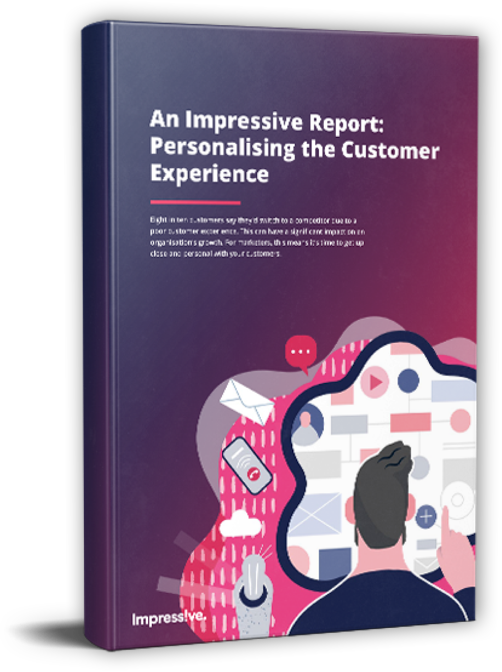As the world continues to collectively battle through the pandemic that is COVID-19, many businesses will start to wonder how they can survive the economic fallout that is already happening around us.
Events have been cancelled. Holidays and sports have been postponed. Restaurants, bars and gyms are either closing or only offering limited output. Everywhere we look, businesses – and the people behind them – are suffering.
But it’s not all bad news. In difficult times, there are always the potential for success stories. All that matters is that we continue to support each other and be customer-focused.
What We’ve Learned in the Past
Pandemics and economic crises have happened before – and they will inevitably happen again. No business venture is ever truly secure. What’s important in this volatile environment is to ensure we’re doing our due diligence, assessing the risks – and potential opportunities – and making the most of the situation we’re in.
Basically, this is a rollercoaster that we all didn’t agree to go on – so we may as well make the most of the ride. And the best way to achieve this is by learning from past experiences.
SARS
In 2003, there was a SARS outbreak that also originated in China. Over 8000 people were infected and almost 800 died. This pandemic had an economic impact across the globe, causing a 2.63% loss of GDP in Hong Kong and 1.05% loss for mainland China.
But it didn’t stop a few businesses in China from making the most of it. Instead, quite a few went above and beyond for their customers. JD.com personally delivered orders to customers who lived close to their office. Not only did this reduce the company’s overheads, but it also provided a more customer-focused experience. It was this resourcefulness and dedication to their customers that led them to become no.1 in the Digital Commerce 360 Asia 450.1
Global Financial Crisis
The GFC was an economic downturn across the globe in 2008. While Australia made it through this period relatively unscatched, the Shadow Treasurer Jim Chalmers recently said this is the lowest Australia’s economic growth has been since the GFC.2
This suggests that companies who were able to maintain steady business throughout the GFC will likely be able to do the same during this period of coronavirus instability – provided you’re creative, innovative and supporting your customers.
What We Can Expect Moving Forward
While Australia is still in the relative early stages of the COVID-19 pandemic – things are moving fast. It’s still far too early to anticipate the full impact of what’s to come. But we can still take advantage of the data we have available to us, and use it to analyse and ultimately anticipate our customer’s needs.
One critical piece of information we know: maintaining open lines of communication is even more important during periods of uncertainty. By understanding our customers – and showing them that we care – we’re far more likely to survive the following stages of pandemic.
Stage 1: Infection not widespread
- Governments advise the public not to panic
- Only light restrictions are in place, in a bid to keep the economy going
Australia has already seen this stage in action. Many businesses began setting up their WFH policies and procedures (if possible) and kept abreast of any changes that affected their operations.
Stage 2: Initial strain on medical system
- Governments increase social distancing rules:
- Mass gatherings banned
- Events cancelled
- Schools, malls, restaurants and gyms forced to shut or decrease business output.
- Wages and jobs affected:
- Travel
- Hospitality
- Live entertainment
- Casual workers and contractors
- Medical system experiences initial strain
- Increase in use of social media and in-home entertainment
If your business needs to postpone or cancel any planned events, it may be worth considering using alternative channels for hosting or facilitating these events. For example, you could turn a physical workshop into an online webinar – or a gym class into a live streamed bootcamp.
Stage 3: Lockdown & border restrictions
- Spending comes to a halt outside of essentials
- Medical system comes under maximum strain
- Consumers start missing luxuries (intensity of this depends on the length of the lockdown)
- Social media and in-home entertainment at an all-time high as consumers occupy themselves during quarantine.
It’s likely that businesses will see a higher engagement with online advertising during this period, particularly on social media platforms – but it may not necessarily result in a proportionate increase in sales or leads.
It’s important to consider what information your customers will be seeking during this time. For retail companies, it may be about your delivery fees and processes. For events and travel businesses it may relate to postponement or cancellations. For gyms or sporting clubs, it may be about membership holds or refunds.
While no one wants to lose business, it’s preferable to be upfront about this information to maintain a positive relationship with your customers – and ideally see a return of their business in the future.
Stage 4: First signs of infection slowdown
- Social distancing rules now begin to relax
- Essentials first – schools, offices, etc.
- Followed by retail, entertainment and hospitality
- Consumers begin spending, focusing primarily on in-person experiences, such as restaurants, cinemas and other events
- Discretionary spending starts to trickle back in
During this period, businesses should look to try and regain any customers they had to previously let go. Offer discounts or promotions to entice them to rejoin you. For any customers you kept throughout, it’s also recommended you offer them something to show you valued their loyalty during difficult times.
Stage 5: Infections dwindle at a greater rate
- Consumer confidence rises, but with greater awareness of self-care and fitness
- Consumer spending gradually trends towards equilibrium
This is where we’ll see a return to the status quo, although with a slight few adjustments. While we’ve already seen a change in sentiment from customers towards businesses that show they care, this will become even more prevalent. Everyone will only want to do business with people that support each other, whether in good times or bad.
How Can Your Business Stay Ahead of the Curve?
While the end of COVID-19 will be good news for every business, we all have to make it there first. Things are changing rapidly, and there’s no telling how long each stage of the pandemic could last. Given the strain on the Australian economy, it’s likely some businesses may not make it to the end. That’s why it’s crucial we all remain vigilant and continue to support each other wherever possible.
At Impressive, we’ve adopted the following strategy planning methodology to help us amend and update our key initiatives. Have a look below to see how if there are any priorities that you could extend or delay to keep your operations sustainable during this time.
Offensive strategy
- Watch the market shifts. Consider how you can respond.
- Follow the changes in online behaviour. If Australians are spending more time on social media, how can you ensure you’re in front of the right demographics?
- Review your services. How can you provide value to your customers right now? How can you change them or market them differently to meet your audience’s new needs?
- Corporate social responsibility. Who can you help, and how? While this may not come with an immediate financial gain, it’s important to support the community, and it will help to solidify your brand’s reputation during this time.
Defensive strategy
- Evaluate your costs. What can you eliminate in order to conserve your resources?
- Review your supply chain. Where is your largest point of risk and what are your alternatives?
- Consider your partners, suppliers and customers. How is this affecting them? Can you support them – or can they support you?
Examples we’ve already seen
As things change, we’re quickly seeing businesses adapting to our new circumstances. Obviously one of the largest changes has been the drastic shift to working from home (where possible), but there have also been other more creative examples. These include:
- Gyms live streaming classes
- Office delivery subscriptions now offering home deliveries
- Telcos offering free data and VPNs
- Accounting and legal companies arranging video meetings
- Physios and other medical professionals providing video consultations
- Contact-less delivery from a range of delivery companies
Stay in Front with Impressive
While the road ahead appears to be a long and difficult one, at Impressive we believe we’ll be able to overcome the difficulties by banding together and supporting each other.
We’re just like every other small business in Australia. We don’t have all the answers, but we’re committed to providing our clients with proactive, responsive and real-time support – ensuring we’re developing new solutions that adapt to our changing landscape.
If you want to learn more about how we can help, get in touch with an Impressive digital strategist today for a business pivot strategy session – completely obligation-free.
Sources






